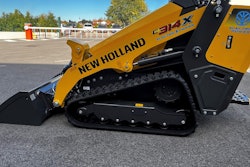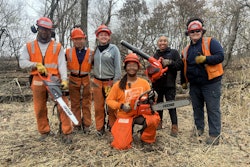
Here’s how to deal with young employees and improve their work ethic.
Like most small-business owners, landscapers wear many hats on a daily basis: supervisor, mentor, disciplinarian, motivator, decision-maker, conflict-resolver, finance manager and the like. But to effectively manage younger employees, they may have to add a new one to their collection — surrogate parent.
That’s the assessment of Terese Corey Blanck, an employee-development consultant who teaches businesses how to attract, retain and manage so-called Generation Y employees – the 75 million or so workers who range from 18 to 30 years old. This cohort is also nicknamed the “Echo Boomers” because the group is almost as large as the Baby Boomers who are now retiring in droves. But the best name you know them by is millennials.
But the comparisons stop there. After interviewing thousands of Gen Y college graduates during her career, Corey Blanck concludes this generation is largely bereft of the decision-making and conflict-resolution skills that most Baby Boomers carry as standard equipment.
Why? Corey Blanck asserts it’s much more than just a generation gap. Instead, she points to overly protective parents who not only paved the way for their children, but also went out and built the road, too. And then striped it, put up guardrails, posted the requisite traffic signs and handed out GPS units, to boot.
“I remember when I got dropped off on my first day at college,” Corey Blanck recalls. “During that first week, I navigated everything myself. I didn’t ask them (parents) for any help making decisions.
“Now, parents set up their loft beds, buy their books and then talk to their kids’ professors,” she notes. “And after they leave, they’re still attached by umbilical cords called cell phones and text messaging. As a result, most members of this generation aren’t really adults, yet.”
She continues by saying the younger generation has not had the experiences or developed decision-making skills, due in part because their parents have been so involved in their lives.
“In a way, they’ve delayed growing up. Their hearts are in the right place, but they just don’t have enough life experiences … They’re still navigating toward adulthood. They don’t know how to fail — and in doing so, haven’t built their skill sets.”
There are exceptions, Corey Blanck notes. She guesstimates 10 to 20 percent of Gen Yers possess enough drive and moxie to thrive as entry-level employees. But there aren’t enough of them to go around, which means it’s very likely you already have some maturity-challenged employees working on your crew, planting shrubs, laying pavers or mowing lawns.
“Managers think they just won’t hire those employees, but most of them are like this,” she points out. “Not everyone can get those top 10 to 20 percent of employees who are (mature) adults.”
Employee development
So what’s a landscape company owner to do? First of all, they might want to temper expectations. Corey Blanck has heard many Gen Y horror stories, like the employees who balk at menial tasks to those who ask if it’s OK to come in late on certain days to accommodate their social lives.
And they often find it difficult if they advance to a supervisory position because they don’t want to hurt the feelings of direct reports with whom they’ve become friends.
“Managers will need to push them out of self-absorbed mode — make them make decisions based on the greater good of the organization,” she says.
Supervisors also must become much more hands-on, developmental managers, Corey Blanck says. Gone are the days when rushed, harried managers could hand off simple projects to employees with minimal direction, under the assumption they’d use old-fashioned Yankee ingenuity to figure out the best way to move and spread that pile of mulch and generally just get things done.
“They’ll need to get to know employees in a more personal way,” Corey Blanck says. “Instead of solving a problem for them, managers will have to walk them through their thoughts … and discuss what kind of resources are available.”
Managers should also talk candidly to employees about their deficiencies.
“They’ll need to sit down with these employees and discuss specific experiences they want them to navigate,” Corey Blanck explains. “Whether they fail or succeed isn’t even the point. It’s all about learning through new challenges and experiences. If you never fail, you never truly know who you are.”
Gen Yers will also demand more dialogue and communication. That means you’ll have to benchmark and assess their development and patiently correct mistakes.
“The more you do something and get corrected, the more efficient your brains becomes at executing the task,” she says. “You want them to practice these new skills on a frequent basis. Part of this is about developing an identity.”
Touch base frequently
In addition, managers will likely find they need to check in more often with these employees, rather than relying on periodic contact on jobsites. And they’ll also need to tailor their management styles to work more effectively with different people. For instance, some will respond better to texts and other electronic communications, while others may still prefer face-to-face contact.
“You’ll have to ask them often if they need help, as well as give them specific times you’ll be available if they need assistance later on,” she adds.
Corey Blanck urges managers not to consider this as detrimental handholding, however. Instead, they should look at it from a different perspective: Managers always have star employees, as well as workers that need help and development — and some need it more than others. Gen Yers are no different.
In many ways, managers will be forced to do the work that family, neighbors and society did in generations past: Help children mature into adults, learn how to manage conflict and develop assessment skills.
“It’s a daunting challenge, but we have no choice,” Corey Blanck asserts. “Managers need to look at these employees differently and start developing them differently. They can get help by utilizing other employees who are further along.”
And who knows? If managers properly and patiently coach and develop this new breed of worker, they just might be able to eventually slip back into normal management mode. And wear one less hat along the way.
By Ken Wysocky











